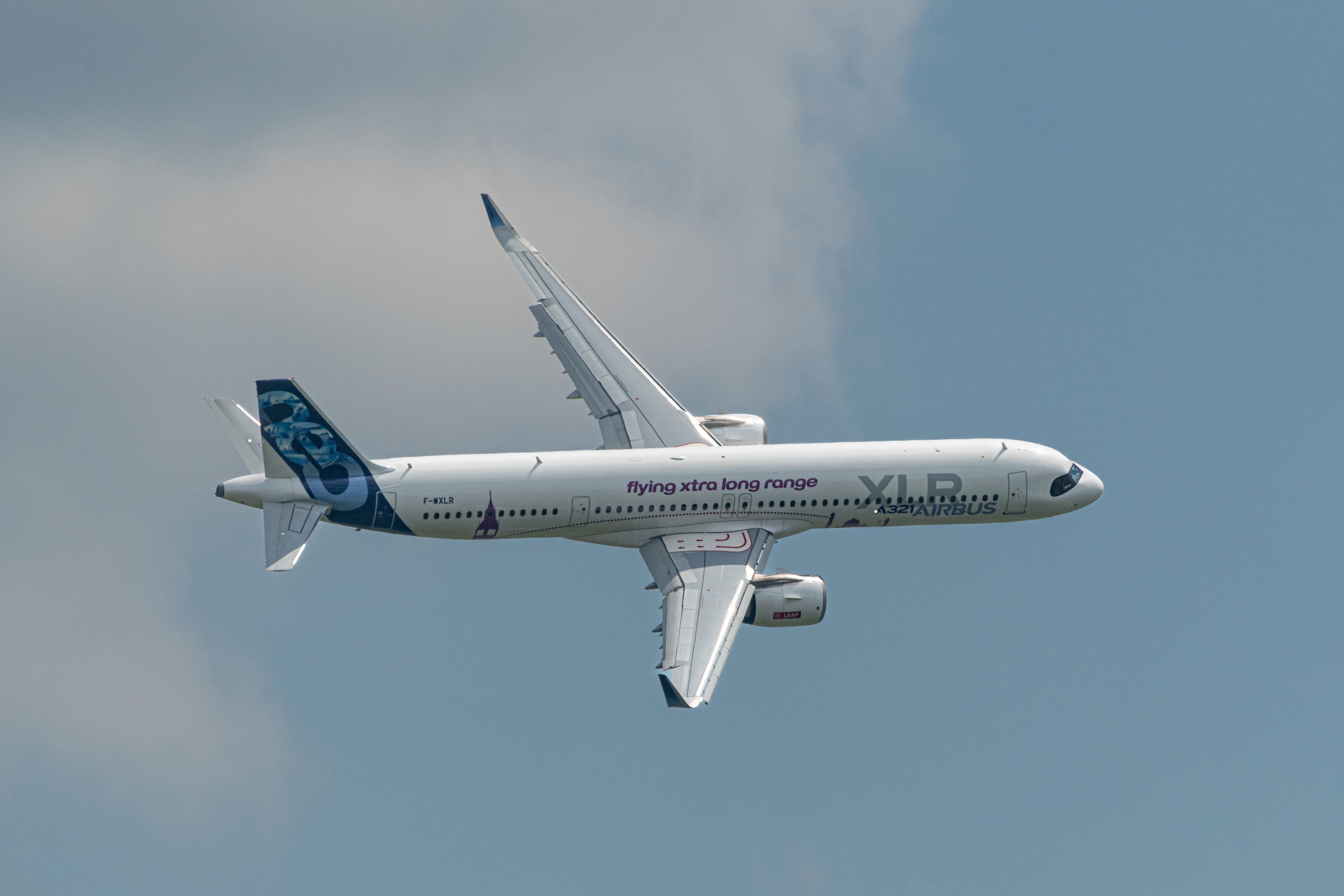Summary Airbus launched the A321XLR with a range of 4,700 NM, carrying 206 passengers in a 2-class setup. A321XLR has enlarged fuel tanks and strengthened landing gear for increased efficiency. The A321XLR offers 45% lower trip costs with reinforced wing flaps and an electrical rudder system.
Airbus launched the narrowbody A321XLR (eXtra Long Range) during the Paris Air Show in June 2019. The aircraft is a brand-new variant of the A321LR (Long Range) with an increased Maximum Takeoff Weight (MTOW) and range, slated to enter service this year. The A321XLR is part of Airbus’ most efficient narrowbody family of aircraft, the A320neo family.

The A321XLR can fly to a range of 4,700 NM (8,650 km) while carrying 206 passengers in a typical two-class configuration. The standard A321neo, which entered commercial service with Lufthansa in 2016, has a range of just over 3,200 NM (6,000 km). With 30% lower fuel burn per seat than previous-generation aircraft, the aircraft is expected to expand the narrowbody possibilities for airlines.
According to Airbus, The Xtra Long Range capability of the A321XLR starts with the engine and aerodynamic improvements introduced on the A321neo. A higher Maximum Take-Off Weight (MTOW) combined with additional fuel capacity offers the A321XLR the unique capability to fly up to 4,700nm. Increased operational range Fuel capacity: 8,700 US gallons (32,940 liters) Rear Center Tank (RCT) fuel volume: 3,400 US gallons (12,900 liters) Center Wing Box (CWB) fuel volume: 2,160 US gallons (8,200 liters) Forward center tank (additional) fuel capacity: 825 US gallons (3,120 liters) Airbus’ secret behind the increased range is an enlarged center wing tank and a new permanent Rear Center Tank (RCT) to carry more fuel, fully integrated into the aircraft fuselage’s primary structure.
The Airbus A321XLR has a fuel capacity of up to 8,700 US gallons (32,940 liters). The RCT has a fuel volume of 3,400 US gallons (12,900 liters), while the center wing box has a fuel volume of 2,160 US gallons (8,200 liters). A forward additional center tank has an additional fuel capacity of 825 US gallons (3,120 liters).
The A321LR and A321XLR are extensions of the A321neo, with the former adding three auxiliary fuel tanks and the latter its RCT for an even more impressive range. Notably, the A321neo and A321LR only differ in terms of the number of fuel tanks the operators choose to install, while the A321XLR will house a permanent new unit. Time is ticking towards the first revenue-generating Airbus A321XLR flight, with Iberia set to take off from Madrid to Boston on November 14.
The first departure from the US is on November 15, with the aircraft spending an unproductive 24+ hours in Massachusetts. It has nothing to do with celebrations. Instead, this schedule will exist for all flights until frequencies pick up later.
Like any new type, the XLR’s entry into service could be derailed, which sometimes occurs when an airline takes a new machine, let alone the first in the world. How do you feel about the XLR’s first service approaching? Are you excited about the variant’s possibilities? While it will have an extended range compared to the LR, it will also overcome some of the LR's limitations, such as better performance against strong winter winds and enabling more bags to be carried. Let us know your thoughts! Other improvements Seating capacity : 180–220 passengers Range : 4,300 NM Fuel burn: 30% lower per seat than previous generation aircraft Trip costs: 45% lower than widebody aircraft The A321XLR also features a strengthened landing gear that can take the increased MTOW of 223,000 lbs (101 tonnes).
The MTOW is four tonnes more than the 97 tonnes on the A321LR. Both the main landing gear and nose gear are reinforced with strengthening materials. The trailing-edge flap of the wing is configured to preserve the take-off performance of the A321XLR.
The single-slotted flap is similar to that on the A319 and A320, which aids in optimized performance at low speeds (take-off and landing). Another significant control surface, the rudder on the vertical tail, has an improved design on the A321XLR. An electrical interface has replaced the mechanical interface, providing significant weight savings.
As used on other Airbus programs, the electrical rudder system offers improved safety and reliability while decreasing maintenance costs. While the aircraft features the same forward cargo hold as the A321neo, the aft hold is slightly bigger. This provides added cargo capacity, which may be helpful for medium-haul operations.
The potable water capacity has been doubled to 105 US gallons (400 liters) compared to 200 liters on the A321neo. Nearing its entry into service In May, Airbus reported that the most awaited single-aisle aircraft is nearing its entry into service later this year. The manufacturer is busy concluding the essential flight-test campaigns while ensuring the first production aircraft are prepped for their deliveries to customers.
According to Airbus, "The A321XLR’s ongoing certification and flight-test campaign is now in its final stages. As well as debriefing after the airlines’ recent route-proving flights, attention is also being focussed on ensuring that the first operators will have everything that they will need in terms of airworthiness compliance and operational support on day-one." "This includes especially the technical documentation and the strategic spares and on-site expert support – to enable the airlines’ smooth operations with the longest-range Airbus Single-Aisle airliner.
" The first Airbus A321XLR flights are due to take off with launch customer Iberia in November. Boston will initially be launched, joined by Washington Dulles. Air Canada previously called the type a "double win", revealing that the smaller capacity will allow it to serve long-haul routes year round where seasonality used to mean they could not fill a widebody.
What impact do you think the A321XLR will have on aviation? Let us know down below! (Photo: Tom Boon | Simple Flying).



















